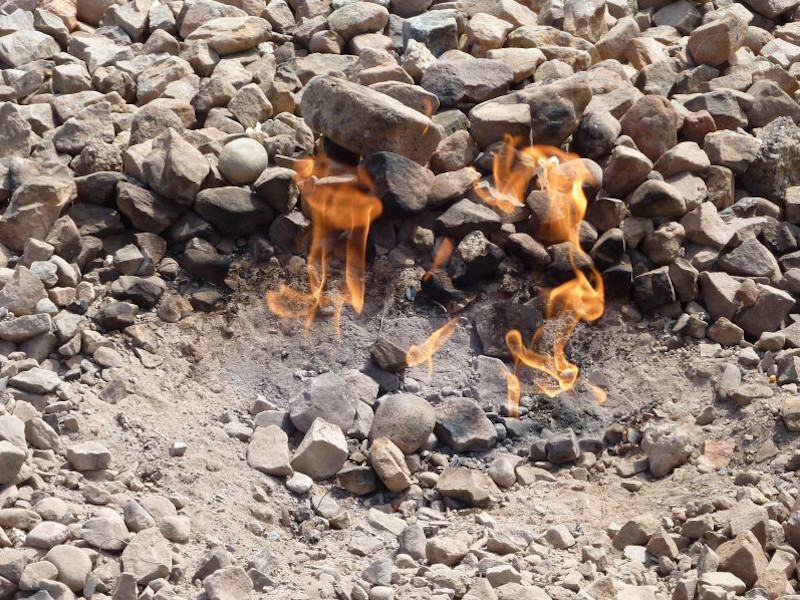The Jagdishpur-Haldia and Bokaro-Dhamra Pipeline (JHBDPL) project is a natural gas pipeline being developed to connect the eastern and north-eastern part of India with the national natural gas transmission network.
Being developed by India’s state-owned natural gas processing and distribution company GAIL, the pipeline route will cover the Indian states of Uttar Pradesh, Bihar, Jharkhand, Odisha, and West Bengal. It will also supply natural gas for the Patna City Gas Distribution (CGD) network.
A 729km-long Barauni-Guwahati pipeline (BGPL) is also being developed as an integral part of the JHBDPL project to connect the seven north-eastern states of India to the national gas grid via the JHBDPL.
The JHBDPL project is part of the Indian Government’s Pradhan Mantri Urja Ganga Gas Pipeline initiative. The investment on the project is estimated to be £1.34bn (Rs129.4bn).
Project Gallery
-

The Jagdishpur-Haldia and Bokaro-Dhamra Pipeline (JHBDPL) is a 2,655km natural gas pipeline that will connect the eastern and north-eastern part of India with the National Gas Grid. Image courtesy of GordonJ86.
-

JHBDPL is a significant project with an estimated investment of £1.34bn (Rs129.4bn). Image courtesy of Ulrichulrich.
-

The project is being executed by GAIL (India). Image courtesy of Kenting.
The phase one of the pipeline covering a distance of 1,100km along the Pulpur-Dobhi route along with spurlines to Varanasi, Gorakhpur, Patna, and Barauni came online in 2019, while the foundation stone for the phase two of the pipeline project along the Ankul-Dhamra, Bhubaneswar route with spurlines to Cuttack and Talcher was laid in December 2018.
The entire JHBDPL network is scheduled to come online by the end of 2021.
Jagdishpur-Haldia and Bokaro-Dhamra Pipeline (JHBDPL) route
The pipeline route covers 50 districts in five Indian states. The first phase, with approximately 755km of pipeline network, covers majorly the states of Uttar Pradesh and Bihar.
The second and third phases cover 875km and 1,025km respectively, in the remaining states.
The pipeline will feed seven city gas distribution (CGD) projects being carried out in the cities of Varanasi, Patna, Ranchi, Jamshedpur, Kolkata, Bhubaneswar, and Cuttack. The pipeline route will also connect the refineries located at Barauni, Haldia, and Paradip.
The pipeline will integrate the under construction BGPL project in the state of West Bengal.
JHBDPL project details
The JHBDPL will have a transmission capacity of 16 million cubic meters of natural gas a day (Mcm/d).
The Phulpur-Bokaro-Kolkata and Bokaro-Ranchi-Angul route will have a mainline design diameter of 30in for an aggregate length of 1,311km; the Angul-Dhamra route will have a mainline design diameter of 36in for a length of 206km; and the Kolkata-Haldia mainline will be of 24in diameter for 145km.
The diameters of the spurlines of the project will vary from 24in to 4in and the total length of spurlines will be 957km covering Gorakhpur, Varanasi, Patna, Barauni, Bokaro, Sindri, Jamshedpur, Kolkata, Durgapur, Ranchi, Rourkela, Cuttack, Sambalpur, Talcher, Bhubaneswar, and Paradip.
Barauni-Guwahati pipeline (BGPL) details
Assam Gas Company expressed its interest to develop and operate the 750km, 24in BGPL project, which will have a transmission capacity of 12Mmscmd.
The major connecting points of the pipeline will be Barauni, Siliguri, Alipurduar, Bongaigaon, and Guwahati.
MECON was awarded the project consultancy services contract for the BGPL project.
Contractors involved
MAN Industries was awarded a contract of £940m (Rs9.25bn) for the supply of approximately 116,000mt of line pipes for the phase two of the project in October 2017.
A £244m (Rs2.7bn) pipe-laying contract was assigned to IL&FS Engineering and Construction Company for laying of pipeline sections of the project in 2018. However the contract was cancelled by GAIL in February 2019 due to poor project progress and financial crisis of IL&FS.
JHBDPL project benefits
The JHBDPL project is expected to play an important role in the transformation of the natural gas market in the country by facilitating gas supplies to the cities and villages for domestic use.
It will also support the revival of three major fertilizer plants Gorakhpur, Barauni, and Sindri.
